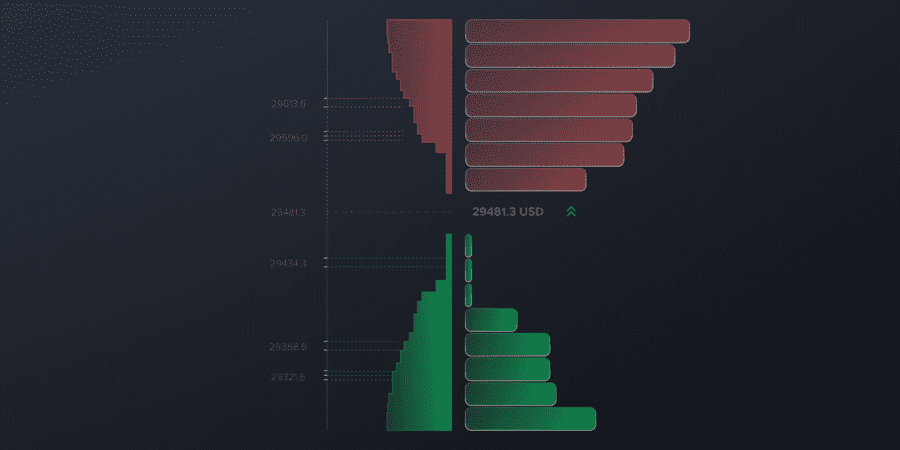
What is the Spread in Trading, and How Does It Work?
Contents
In trading, the spread is the variation between the bid and ask prices, therefore determining the transaction cost. Every transaction is affected by this basic concept, which also influences the prospect for profitability and the cost of opening a position. For traders, knowledge of the spread is crucial as it immediately affects trading strategies and results without exploring intricate market dynamics.
Defining the Bid Ask Spread
In the world of financial trading, the spread is an essential concept that significantly influences trading activity cost. It shows the variations between the bid and the ask price, two important pricing in any financial market. Whereas the ask price is the lowest price sellers are ready to accept, the bid price is the highest price consumers in the market are ready to pay for a certain commodity. This spread captures the asset’s liquidity, market circumstances, and direct cost traders pay when making transactions, its not just a basic price difference.
Types of Spreads
Bid-Ask Spread
Predominantly observed in all forms of market transactions, the bid-ask spread is foundational to understanding market dynamics. It is especially noticeable in markets with substantial trading volume, including popular securities in the stock market or significant pairings of currencies in Forex trading. This spread immediately shows the liquidity of the asset; a smaller bid-ask spread usually indicates a more liquid market with plenty of trading activity. In contrast, a wider spread indicates lower liquidity and higher transaction costs.
Fixed vs. Variable Spreads
Traders encounter two main types of spreads in their trading journey:
- Fixed Spreads: These spreads are constant independent of market circumstances or time of day. Particularly helpful in less volatile markets or for strategies based on stable spread prices, they provide dependability and consistency. Fixed spreads are often preferred by traders who must accurately forecast their trading fees.
- Variable Spreads: Variable spreads change depending on present market circumstances unlike fixed spreads. While periods with great liquidity tend to be smaller, strong volatility or important economic news might cause them to expand greatly. This type of spread reflects the real-time supply and demand in the market.
Role of Spread in Financial Markets
Within the complex structure of financial markets, the spread is more than simply a statistic; it is a necessary element maintaining the basic viability of the market. The major participants maintaining market liquidity, brokers and market makers, mostly depend on the spread as their main source of revenue. Always ready to purchase and sell assets, a market maker intentionally sets the bid and ask prices, therefore influencing the spread depending on their assessment of the state of the market. This spread is not random; it is pay for the risks incurred in giving the market constant liquidity.
For traders, the spread is a critical element to consider in their trading activities. It’s a direct influencer of trade execution, impacting both when they enter and when they exit the market. The spread’s size becomes particularly significant as it determines the minimum movement an asset’s price must make for a trade to break even. A wider spread denotes that the market price needs to undergo a more significant move in the trader’s preferred direction to turn a profit, thus heavily influencing the trader’s decision-making process. This makes the spread a fundamental factor in formulating trading strategies and assessing potential risks.
Therefore, knowing the spread is not only a component of trading expenses but also as a reflection of many market aspects, like liquidity, volatility, and the activities of market makers. Its impact penetrates every aspect of trading, from the first formulation of a strategy to the last execution of a trade and even to its ultimate profitability. In sum, the spread is a multifaceted aspect of financial markets that traders must master to navigate them effectively and enhance their trading success.
How Spread is Calculated
Although the spread may be determined somewhat easily, the procedure differs somewhat depending on the market. Fundamentally, the spread is computed by deducting the bid price—that is, the amount a buyer is ready to pay for an asset—from the ask price, the price a seller is ready to accept. Traders have to take this price differential into account both when entering and exiting the market. The bid price is always less than the ask price; the spread shows the variation between these two pricing points.
Within the framework of Forex trading, where the market is very busy, the spread becomes a vital gauge of the liquidity of a currency pair. Major currency pairings like EUR/USD usually show a smaller spread because of their great liquidity and trading volume. The limited spread suggests that the demand and supply balance in the market is strong as the buying and selling prices are near to one another. This helps traders as it suggests higher profit chances and reduced transaction expenses.
Conversely, less traded or exotic currency pairings often show a larger spread. Higher risk and less liquidity in these pairings translate into a bigger spread that results in greater trading expenses. Often from less trading volume and less interest in that specific currency pair, a greater gap between a currency pair indicates a notable disparity between what buyers are ready to pay and what sellers are ready to take.
The magnitude of the spread captures the perspective of risk and volatility of the market as much as its liquidity reflection. Spreads may widen generally in times of uncertainty or major economic developments when market makers modify their bid and ask pricing to reflect the higher probability of quick price swings.
Factors Influencing the Spread
In the always changing terrain of trade, the spread is not a fixed number but rather one affected by a multitude of elements. These elements may greatly affect the spread, thereby influencing trading strategy and cost. For traders, knowing what influences variations in the spread is essential as it enables one to predict market moves and modify their trading plans. Here we explore the main drivers of the spread: market liquidity, volatility, and other important aspects.
Market Liquidity
Understanding the mechanics underlying the spread in trading depends mostly on the concept of liquidity. Simply said, liquidity is the ease with which one item may be purchased or sold on the market at a price near its market value. Assets may be sold fast and effectively in markets with great liquidity and strong trading volume, hence narrowing the spread. This is so because numerous sellers and purchasers make sure that transactions may be carried out without significantly influencing the price of the asset. For instance, major currency pairs exhibit higher liquidity in the Forex market, resulting in narrower spreads. This reduced spread cost benefits traders by implying lower costs to enter and exit trades, making high liquidity markets attractive for frequent trading.
You may also like

Market Volatility
Another vital element affecting the spread is volatility. It expresses, for a given set of returns, the rate of change in the market price of an asset. In times of great volatility, the prices move quickly and drastically in a very short period of time. The market maker is in danger due to this volatility; he reacts by increasing the spread. For market makers, the greater spread during periods of volatility serves as a buffer against quick and notable price swings between the time a trade is made and completed. This behavior is often witnessed during large economic events, geopolitical crises, or important company announcements, when uncertainty creates turbulent market circumstances.
Other Influencing Factors
In addition to liquidity and volatility, several other factors can influence the spread in trading:
- Time of Day and Trading Sessions: TAs world financial markets open and close, the spread could change throughout the day. In Forex trading, for instance, the intersection of important trading sessions—like the London and New York sessions—often results in more liquidity and narrower spreads.
- Economic Events and News: Economic announcements that bring uncertainty and possible volatility—interest rate decisions, job statistics, inflation data—may cause spreads to expand. Many times, traders closely monitor the economic calendar in order to predict such variations in the spread.
Knowing these elements allows traders to predict changes in the spread and make appropriate trading plans, therefore ensuring they match the current situation on the market.
Spread and Its Impact on Trading
The spread, often perceived as a mere difference between two prices in trading, actually holds a more profound significance, especially regarding the costs associated with trading. In essence, the spread cost represents a fundamental fee that traders encounter every time they execute a trade. This fee is an intrinsic part of the transaction process, affecting a trade’s entry (buy price) and exit (sell price).
Understanding Spread as a Transaction Cost
Traders immediately face the spread cost when they start a transaction. In Forex trading, for example, a trader purchases a pair of currencies at the ask price and will require the market price to move positively by at least the difference in spread to break even. When selling, on the other hand, they have to deal with the offer price—always somewhat less than the market price. This difference, the spread, affects the whole profitability of the deal and is essentially the cost the trader pays to join the market.
Comparing Spreads Across Brokers and Platforms
Comparing spreads provided by many brokers and trading systems is one of the ways traders could control and lower expenses. Depending on their target audience, market circumstances, and business strategies, brokers might provide varying spreads. Some brokers might offer consistently competitive spreads, which can benefit traders prioritizing lower transaction costs. However, it’s crucial for traders to consider the spread and any separate trading fees or commissions that may apply.
A broker with a narrow spread, for example, may additionally impose a separate trading fee, which will make up for all of the trading expenses. Conversely, a broker with a somewhat larger spread but no extra trading costs might be a more reasonably priced alternative. Whether they are day trading, scalping, swing trading, or another trading technique, traders have to assess these expenses in relation to their trading volume and approach.
Spread Cost in Different Market Conditions
The impact of spread on costs can also vary with market conditions. Spreads often decrease in periods of reduced market volatility, which lowers transactional costs. On the other hand, spreads may expand significantly in times of great volatility or large economic news events. This fluctuation in the spread cost influences the profitability of trading methods, particularly those depending on minor price swings.
Trading expenses mostly consist of the spread, which traders have to consider in every transaction they do. Understanding the structure of the spread, comparing offers across many brokers and platforms, and matching trading strategies with present market circumstances can help traders efficiently manage and maybe lower the trading expenses. Long-term success in the dynamic and always shifting environment of finance depends on this financial sensibility.
The Impact of Technology on Spread Trading
The dynamics of spreads have been substantially changed by the technological progress of the financial industry. The development of online trading platforms and automated trading systems has changed the trading landscape by increasing market efficiency and decreasing spreads.
Influence of Online Trading Platforms
Online trading technologies have changed the access to the markets. These systems let traders track real-time price and spreads for many financial goods, including commodities, Forex, and stocks, therefore fostering transparency. This heightened visibility and accessibility have fostered a competitive environment among brokers, compelling them to offer narrower spreads to attract and retain traders. The ease of comparing spreads across different platforms has enabled traders to make more informed decisions, thereby putting pressure on brokers to maintain consistently competitive spreads.
You may also like

Role of Automated Trading Systems
Automated trading systems have also played a significant role in influencing spreads. These systems, which use algorithms to execute trades, can process a large volume of transactions rapidly and efficiently. This efficiency contributes to higher market liquidity, leading to tighter spreads. Reacting instantly to movements in the market, automated systems can capitalize on limited spread chances that would be too brief for personal trading. This has created an atmosphere where, reflecting the most current market circumstances, spreads may be optimized in real-time.
Technology integration in trading has reduced spreads and democratized access to many markets, therefore enabling a larger spectrum of players to participate in trading activities. As technology develops, its influence on market dynamics—including the determination and management of spreads—is projected to increase even more, providing traders with more sophisticated instruments and chances in their trading activities.
Conclusion
The spread is a fundamental concept in trading, integral to understanding market dynamics and transactional costs. From Forex to stock trading, a trader’s ability to effectively navigate spreads can significantly influence their trading success. As market conditions evolve, so too must traders’ strategies in handling spreads, making continuous learning and adaptation key to trading proficiency.
Updated:
December 18, 2024
8 January, 2026
Stock Market Hours: When Does The Market Open?
Most major stock markets are open Monday to Friday, with opening times depending on the exchange and its time zone. For example, US stock markets open at 9:30 AM ET, while the London Stock Exchange opens at 8:00 AM UK time. There is no regular stock trading on weekends. Below, you’ll find a clear, practical […]



